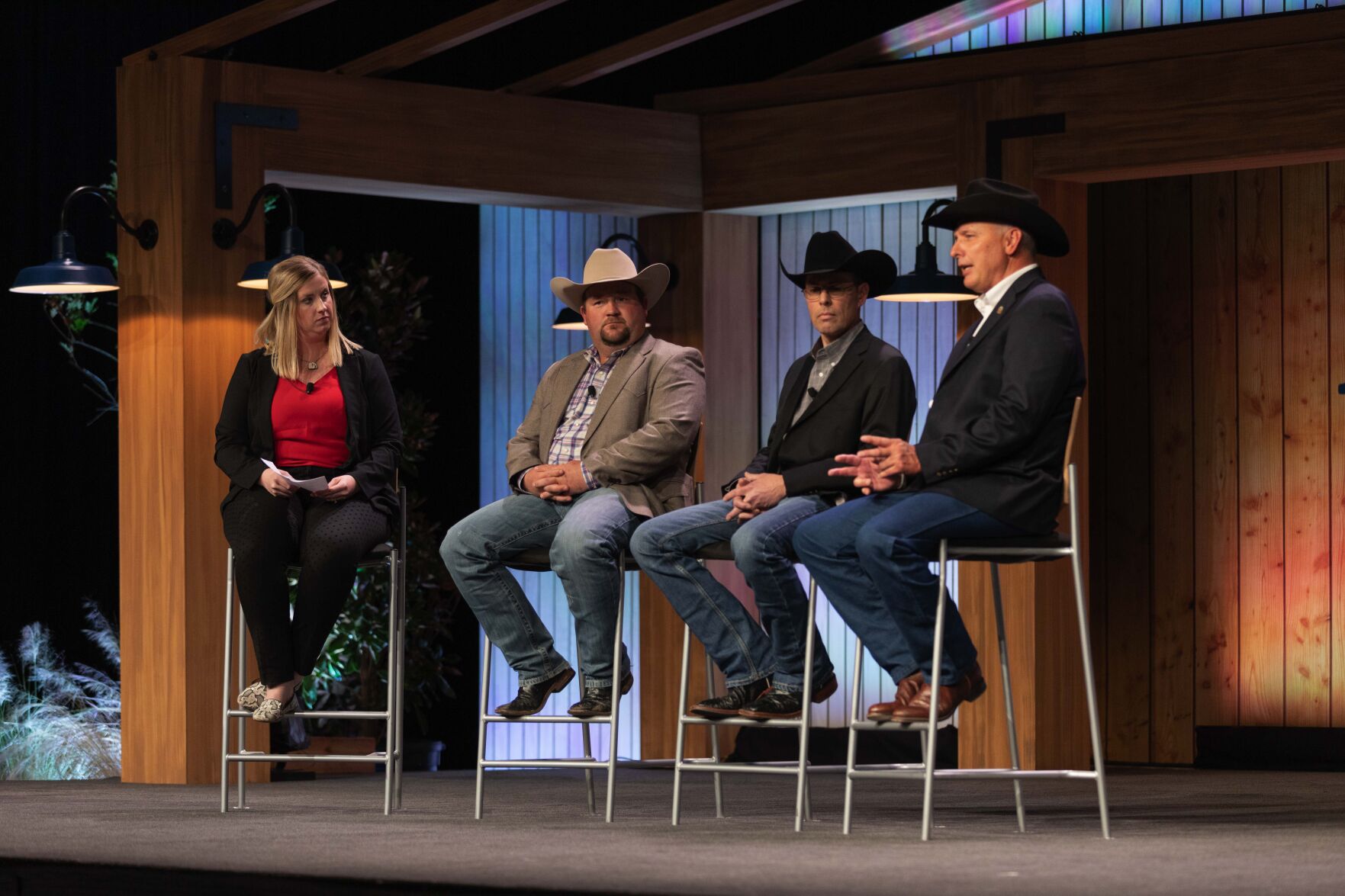How can breeders balance operational goals with long-term goals in mind?
Geography creates different challenges for operations across the country. Even with those obstacles, breeders achieve success year after year. During the 2021 Angus Convention Genetics Symposium sponsored by NEOGEN, Kelli Retallick-Riley, president of Angus Genetics Inc., moderated a panel of Angus breeders that represented diversity but were consistent on maintaining the longevity of their operation. Gordon Stucky of Stucky Ranch, Adam Sawyer of A&B Angus and Scott Pohlman of Pohlman Cattle Company shared perspectives, resources and ideas on how they create a plan and stick to it.
As panelists shared their own breeding objectives, all mentioned they focus on meeting the needs of their customers. Sawyer shared how ninety percent of their bull buyers derive their income from the cattle business, so they look at many traits to suit multiple needs.
Sawyer said, “The female is very important to us, but we also have a set of criteria for carcass traits that we don’t go below to stay on track with industry standards.”
Hailing from the panhandle of Texas, Pohlman shared his perspective of raising cattle on drought-prone land with minimal grass. He mentioned how important it is to not get caught up with the “latest and greatest top-selling herd sire.” He knows some of his customers won’t be able to capture the full genetic potential of that sire in the environment they live in. Pohlman believes in focusing on the foundational traits long term.
Aside from balanced breeding objectives and balanced traits, some may argue about the definition of balance. Sawyer defines balance as an all-encompassing term, where cattleman can find everything they need to have breeding cattle that will work in a particular environment. Stucky believes a balanced cow herd has no holes.
Panelist also highlighted the importance of data collection, especially since the American Angus Association® recently surpassed the one million genotype mark. Coupling genomics and EPDs has allowed Sawyer and his operation to have more confidence in the data. For Stucky, submitting data through Angus Herd Improvement Records and MaternalPlus allows them to evaluate their whole herd every year. The data assists them in sorting their herd to help them determine the direction they want to go.
“The future of data collection will surely be better. We just have to be patient,” Stucky said.
Finding balance will continue to improve as Retallick-Riley shared the research being developed at AGI. However, she reminded the membership that the work is never done. There is always more to learn.
Visit Angus University https://www.angus.org/university to access beef industry tools and resources.




